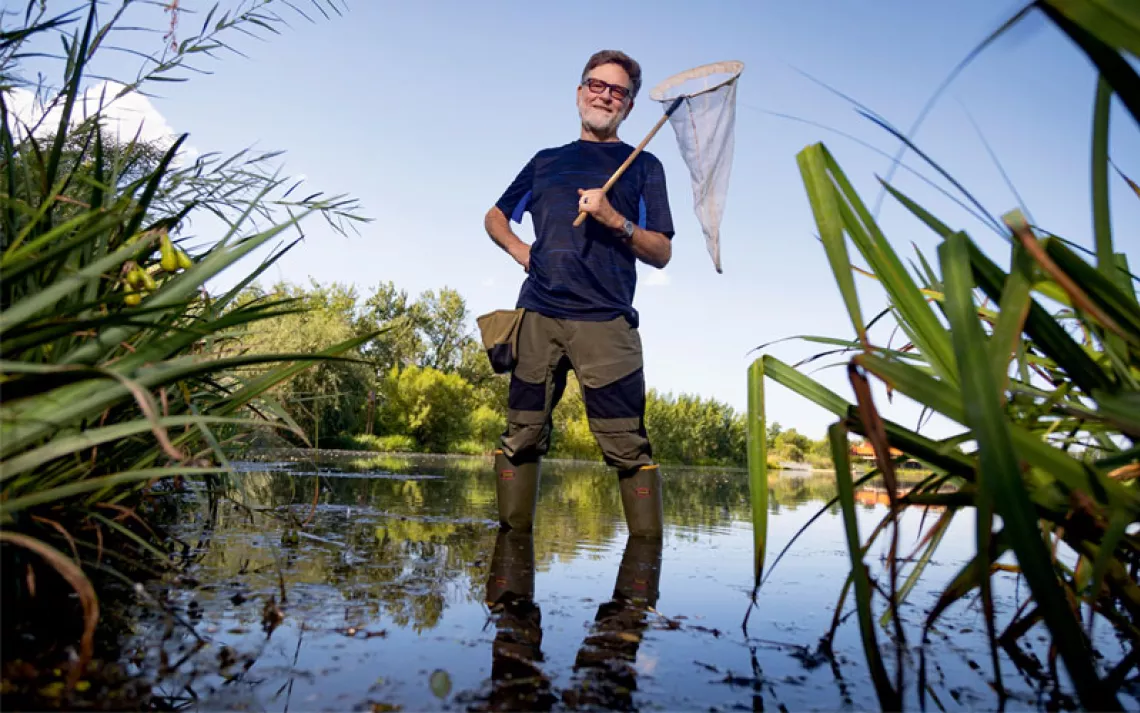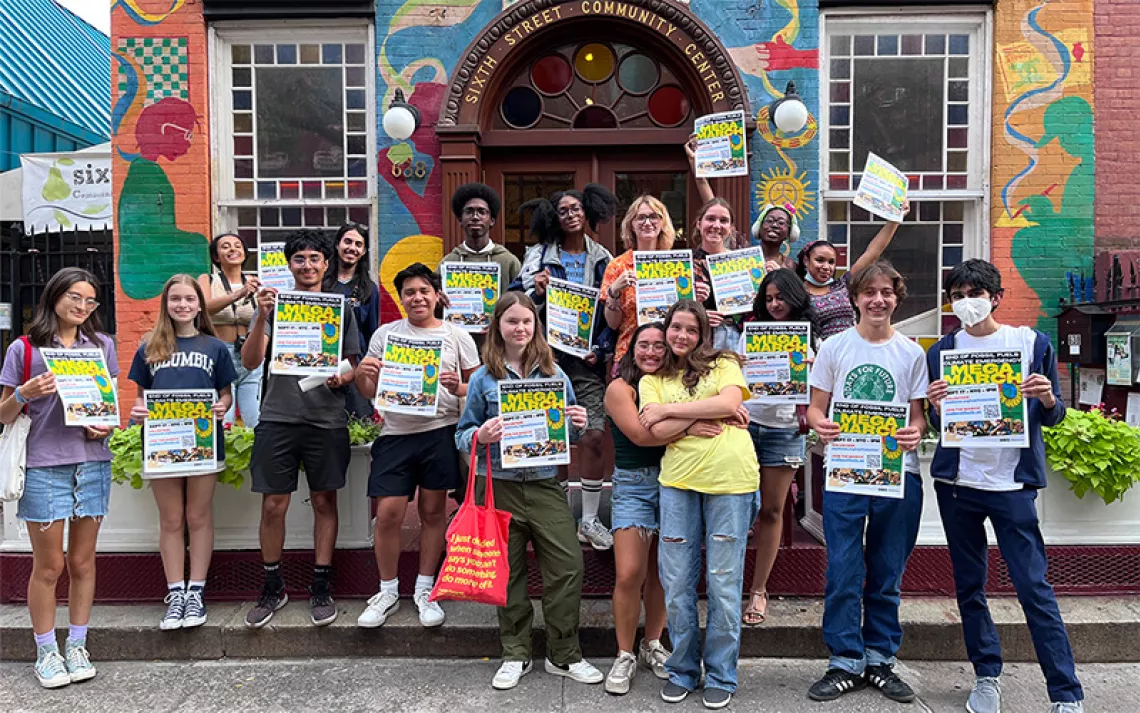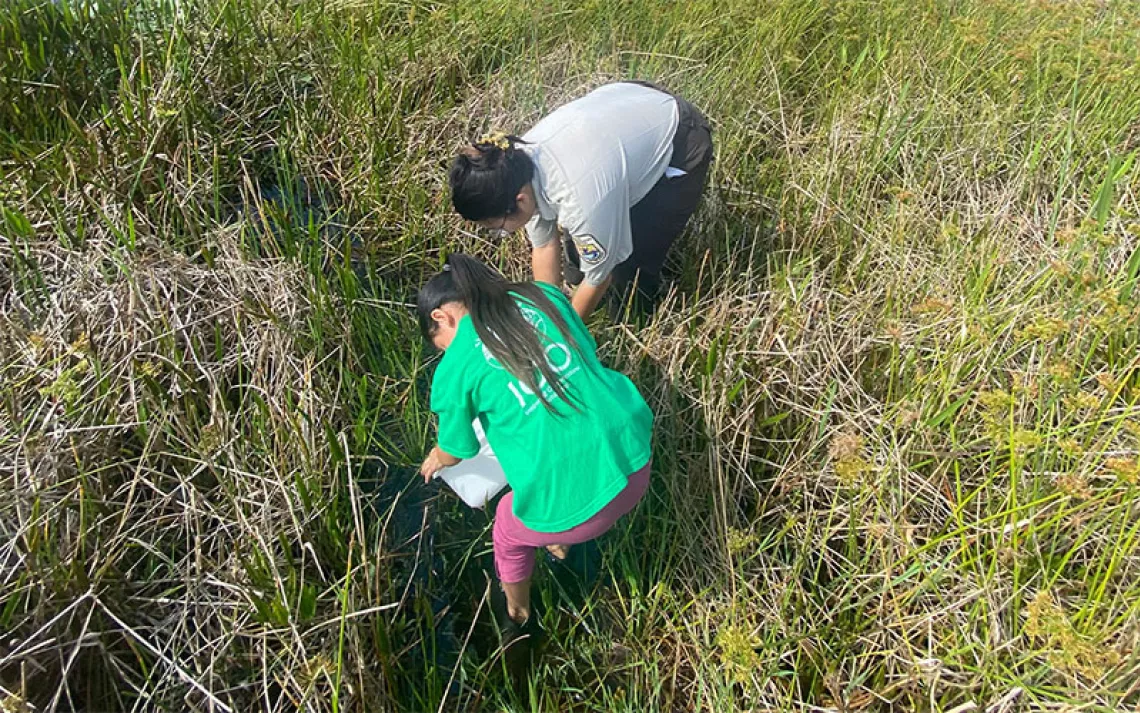The Greening of K–12 Cafeterias
School cafeterias are improving how and what they serve their students
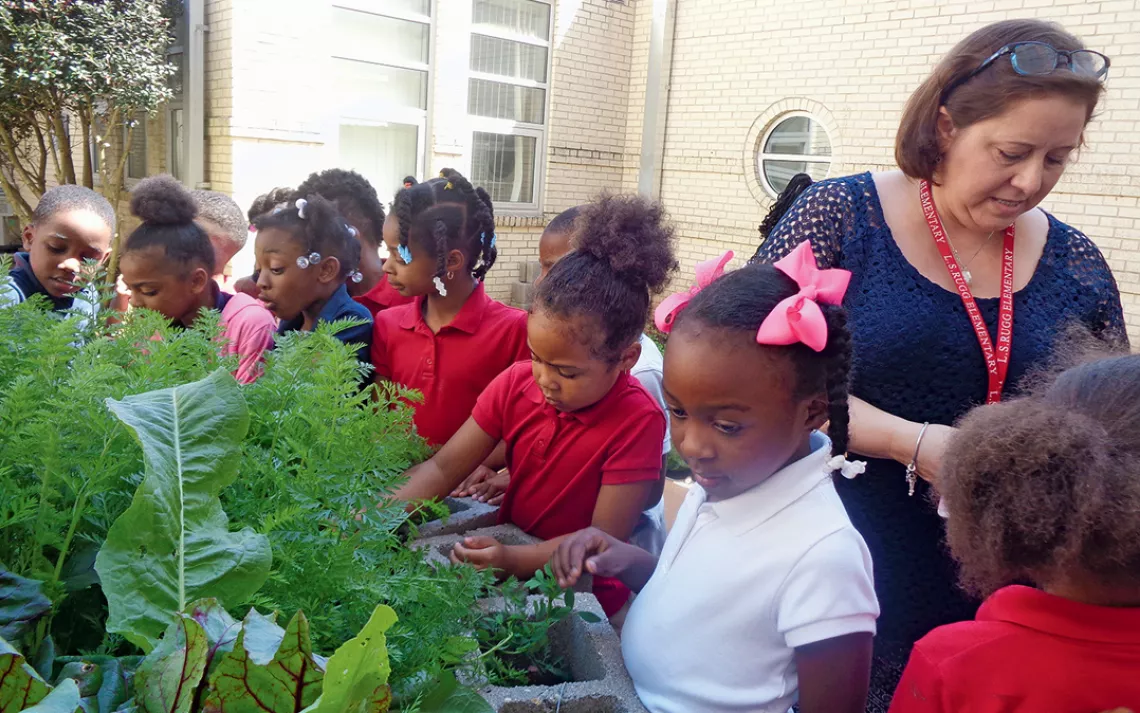
A teacher and students in the garden at L.S. Rugg Elementary School in Alexandria, Louisiana | Photo courtesy of National Farm to School Network
Last September, Rory Gresham refurbished five abandoned greenhouses at two high schools in northeastern Louisiana's Richland Parish. He rigged up some hydroponics and ended up producing more than 8,000 heads of lettuce—a harvest headed straight for eight of the school district's cafeterias. When state senator Francis C. Thompson visited the greenhouses last spring, he was impressed. Then he introduced a bill proposing farm-to-school programs in all of Louisiana's public schools.
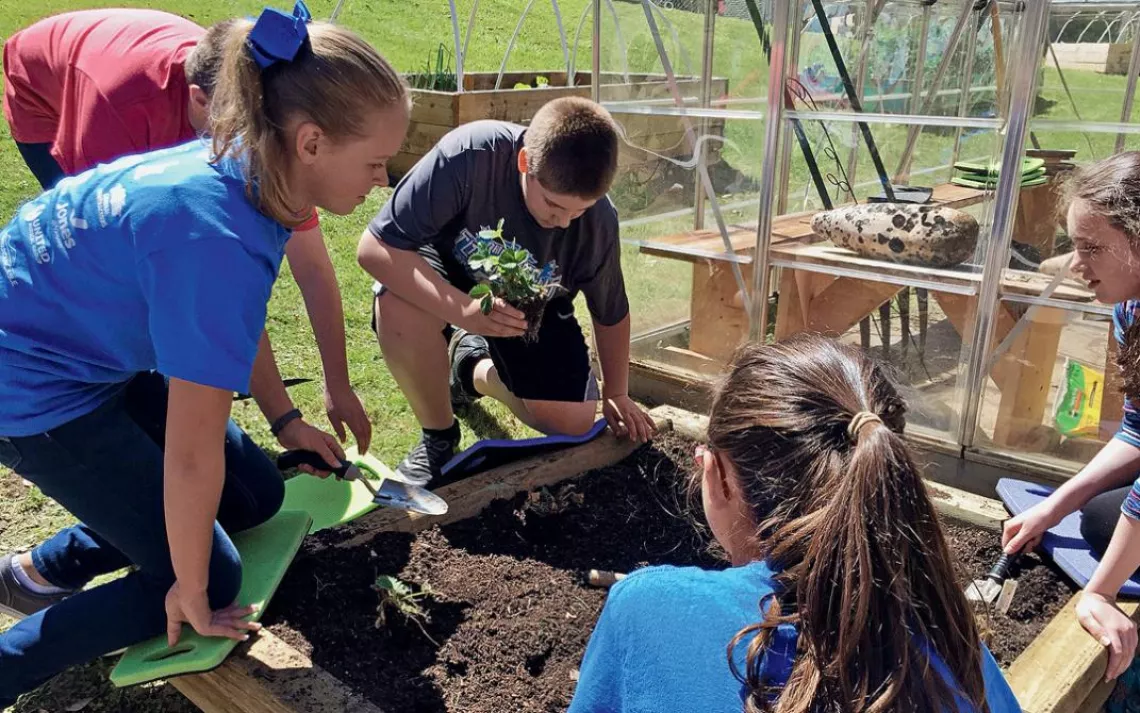
Sixth-grade students plant strawberries in the garden at Pikeville Elementary School in Kentucky. | Photo courtesy of National Farm to School Network
Efforts like these mark a sea change in school cafeterias across the United States. Spurred by rising obesity rates and climate change, districts are trying to cut back on food waste, to compost, and to provide sustainable, organic meals to the children they serve.
But change is hard in school systems, which are often plagued by tight budgets. So a few innovative organizations are leading the effort. The National Farm to School Network (farmtoschool.org) awards 100 schools a $5,000 grant every year to establish gardens and greenhouses, as well as relationships with local farmers. Almost half of all U.S. public schools, or nearly 24 million students, have participated in its activities.

A young boy gets creative with beans.| Photo courtesy of Lean and Green Kids
The group's work is paying off: During the 2013-14 school year, districts across the country spent $789 million on local food (usually defined as food produced within their city or state) not sourced from Big Ag conglomerates.
Everyone benefits. The farms get steady business, school districts gain purchasing power, and, most important, kids get fresh, local food—fish in Massachusetts, peaches in Florida—that isn't trucked in from 10 states over.
The model works especially well for rural areas, where the farms are actually local. For big inner-city school districts that are just scraping by (New York City public schools spend just $1.25 on each lunch), moving cafeterias toward environmental sustainability is a tougher task.
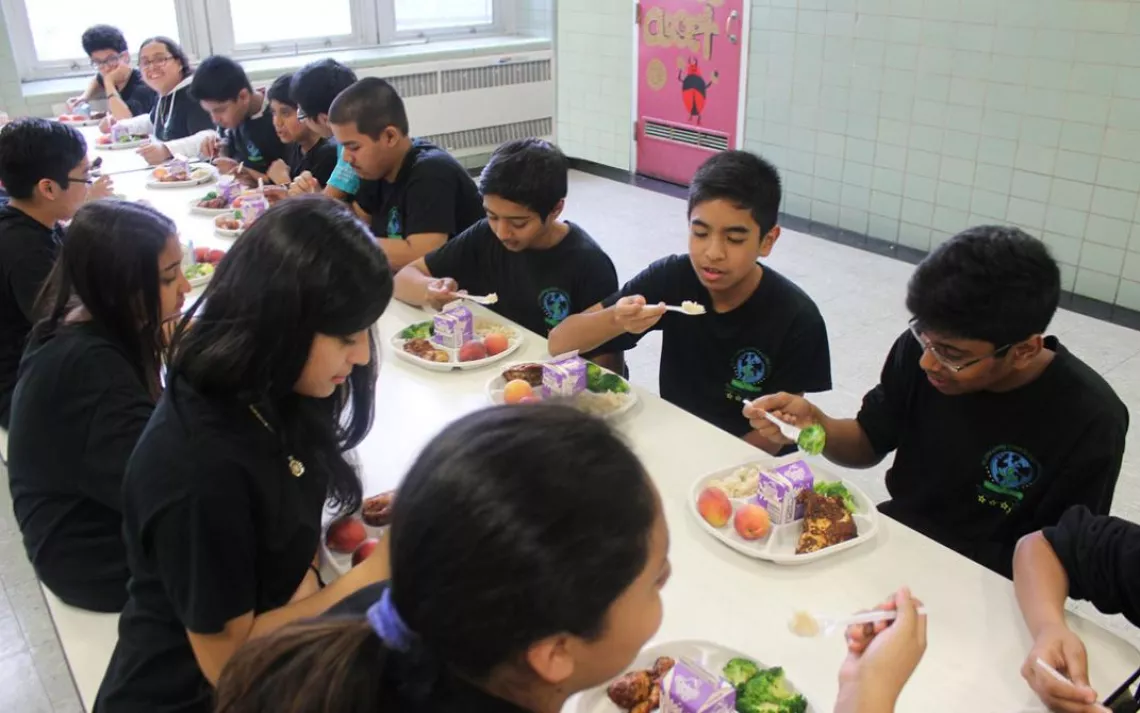
Urban School Food Alliance uses compostable round plates at its six member districts, replacing polystyrene trays. | Photo courtesy of Urban School Food Alliance
Four years ago, Eric Goldstein, the CEO of the New York Department of Education's School Support Services, felt hamstrung by the lack of affordable ecofriendly options for his district's cafeterias. When he reached out to other cities, the Urban School Food Alliance was born, six districts strong: New York City, Los Angeles, Chicago, Dallas, Miami-Dade, and Orlando.
Since 2013, the alliance has replaced Styrofoam trays with compostable plates made from recycled paper in all of its districts, cutting 225 million polystyrene trays per year from the waste stream. To pull this off, the school districts pooled their resources. Compostable plates cost three times as much as Styrofoam trays, but the schools' combined bargaining power convinced a company to manufacture a compostable plate for about the same price as a landfill-clogging tray.
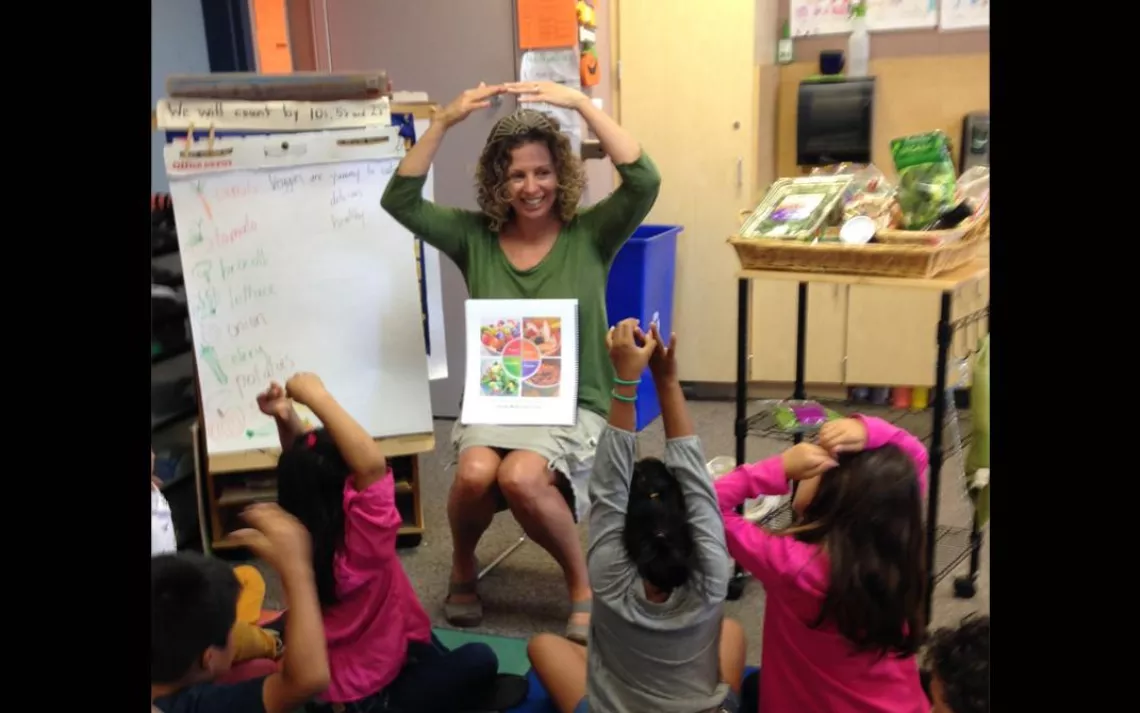
Barbara Cole Gates (Queen Bean) reads from her children's nutrition book, Eating Lean and Green With Super Foods to Save the Planet. | Photo courtesy of Lean and Green Kids
Now the districts are working with local distributors to get antibiotic-free chicken into cafeterias. "Antibiotics have no place in animal husbandry," Goldstein says, "so we're speaking with our dollar to keep them out of our schools."
Of course, there are also people working to change things on their own. In El Cajon, California, Barbara Cole Gates is a former PTA member on a one-woman mission to teach kids about the personal and planetary benefits of plant-based meals. "Nutrition education isn't a top priority for busy teachers," she says. So she created Lean and Green Kids (leanandgreenkids.org), an organization that develops a monthly curriculum for teachers and school nutritionists. Each installment includes short daily nutrition messages, a "cool bean of the month," and a take-home vegan recipe.
Every morning, Leslie Engel, a teacher at Southern California's South Oceanside Elementary School, has her second graders read Gates's curriculum. "When kids are being educated about what to look for," Engel says, "when their teachers are telling them every day how to eat well, that gets through."
Recently, two of Engel's boys ran up to her after lunch. "We ate spinach!" they told her. "And it was really good!"
This article appeared in the September/October 2016 edition with the headline "The Clique That's Changing How Schoolkids Eat."
 The Magazine of The Sierra Club
The Magazine of The Sierra Club

